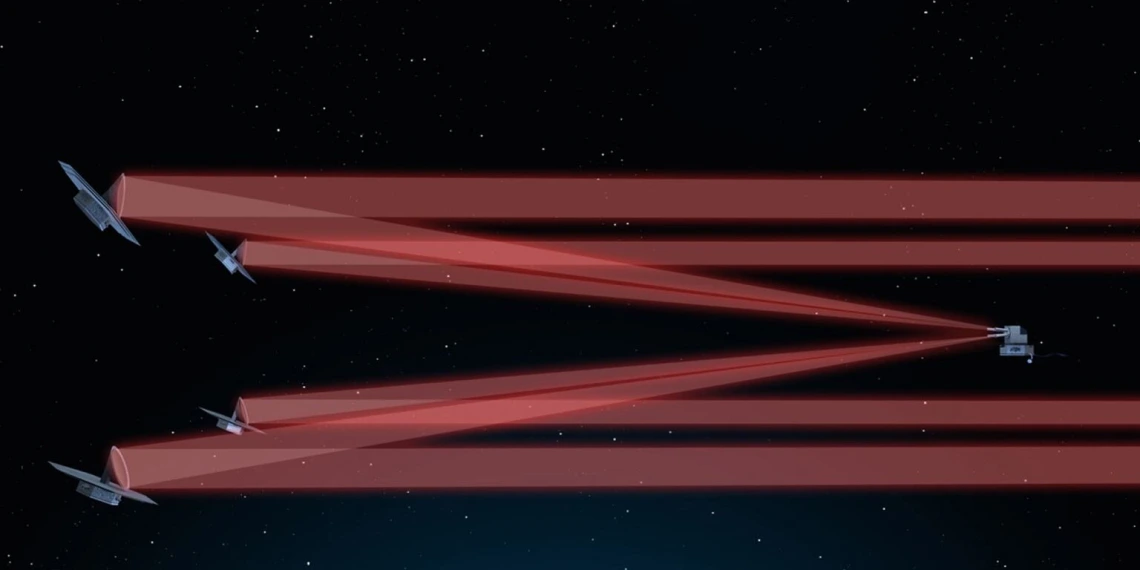Some Potentially Habitable World Targets for the Upcoming LIFE Mission

Illustration of the Large Interferometer For Exoplanets (LIFE) mission.
ETH Zurich / Life Initiative
The odds are good that we are not alone in the universe. We have found thousands of exoplanets so far, and there are likely billions of potentially habitable planets in our galaxy alone. But finding evidence of extraterrestrial life is challenging, and even the most powerful telescopes we currently have may not produce definitive proof.
There are telescopes in the pipeline that may uncover life. It will be decades before they are built and launched, but when they are, which systems should they target first? That's the question answered in a recent paper published in Research Notes of the AAS.
There are two major projects in the pipeline with the specific goal of searching for life. One is NASA's Habitable Worlds Observatory (HWO), and the other is the Large Interferometer For Exoplanets (LIFE). Both would use high-resolution spectroscopy to map the chemical composition of exoplanet atmospheres and identify potential biosignatures.
But both are in the early design and proposal stages, and it will be at least the 2040s before either are launched. Both also have a downside, in that they will need long observing times to capture detailed spectra. So when they are launched, they won't be able to look at exoplanets willy-nilly. They will need a specific plan.
This is where this new paper comes in. In it, the team outlines the criteria for prioritizing targets. Drawing from a range of sources, they filter known exoplanet systems into some best-case groups. The first consists of main-sequence stars within 30 parsecs of Earth.
But rather than considering all nearby stars, the list only includes stars that are either single stars or wide binaries. The idea is that these are most likely to have planetary systems with stable orbits. The group also excludes red dwarfs, since red dwarfs are likely to produce large flares and X-rays hostile to life.
The second group consists of star systems that are positioned in a region of the sky best suited for observation by LIFE and HWO. For example, if a system is aligned with the orbital plane of Earth, it will be more difficult to study since the sun will be in the way for part of the year.
The third group consists of the "Golden Targets." These are systems known to have potentially habitable planets with atmospheres and excellent observing conditions. There are currently about ten systems in this group, but future observations are likely to add more to the list before LIFE and HWO are launched. This group represents the priority targets for these missions.
If you are curious, you can see which systems are in each group at the LIFE Target Star Database.
More information: Franziska Menti et al, Database of Candidate Targets for the LIFE Mission, Research Notes of the AAS (2024). DOI: 10.3847/2515-5172/ad887e
